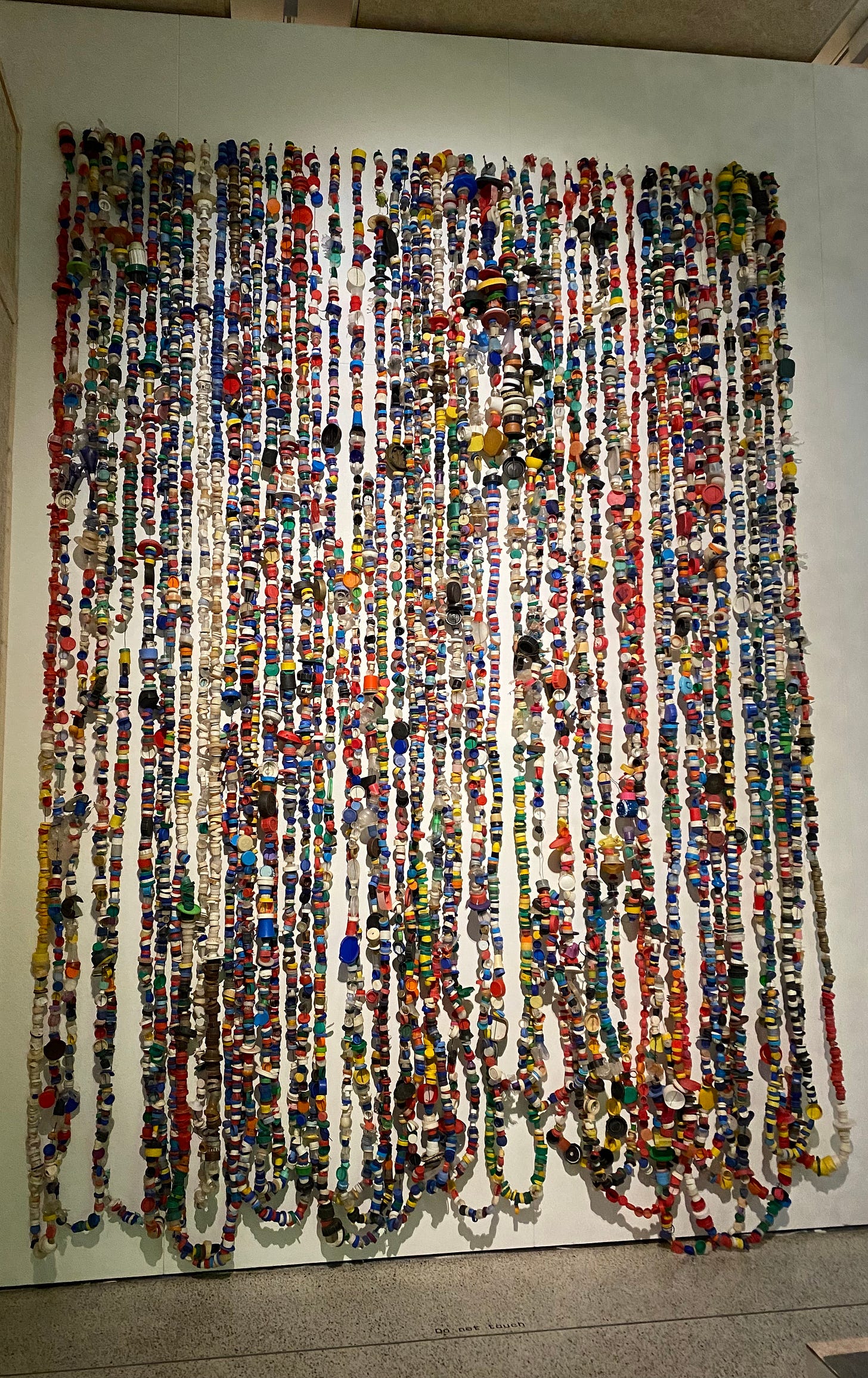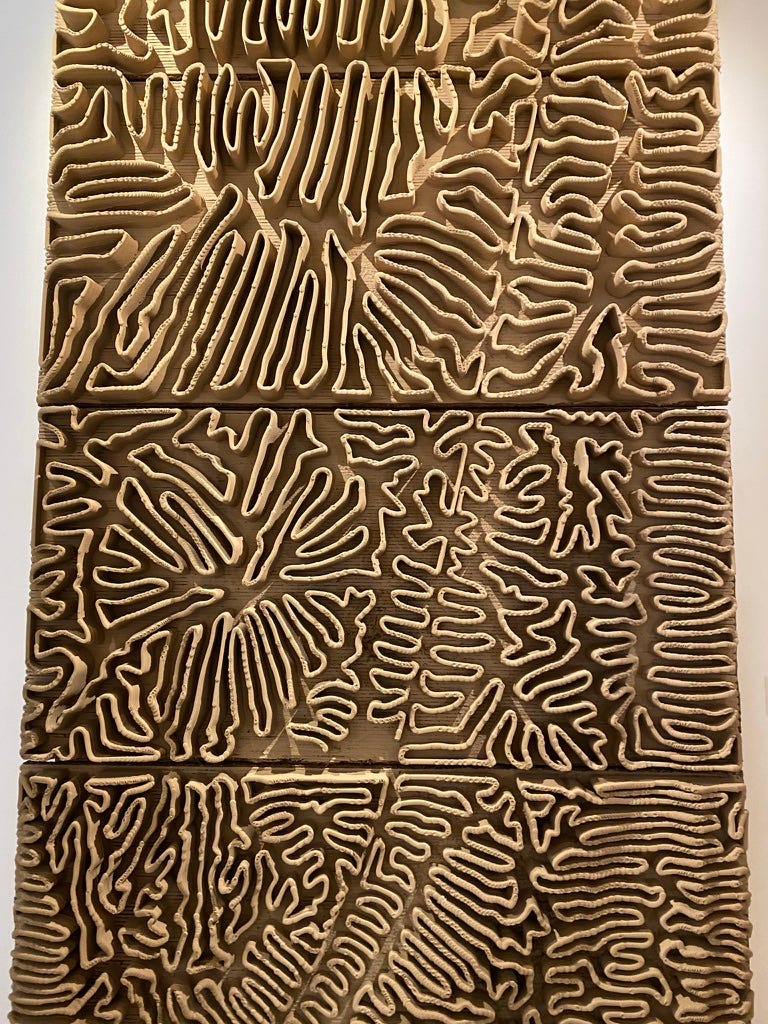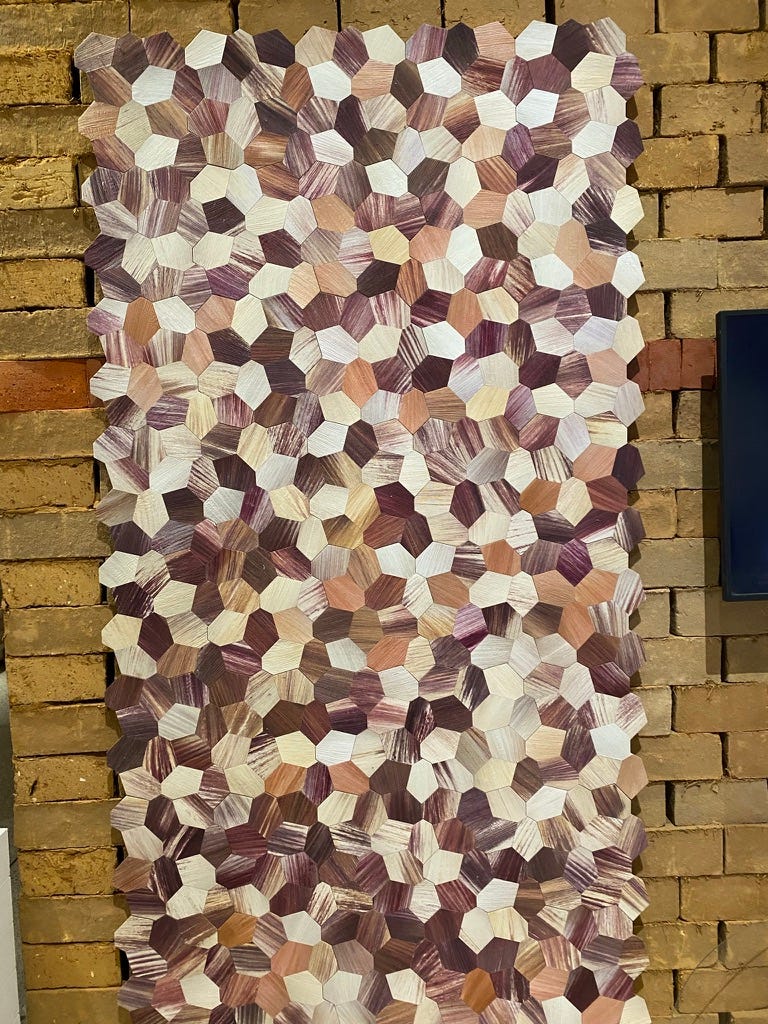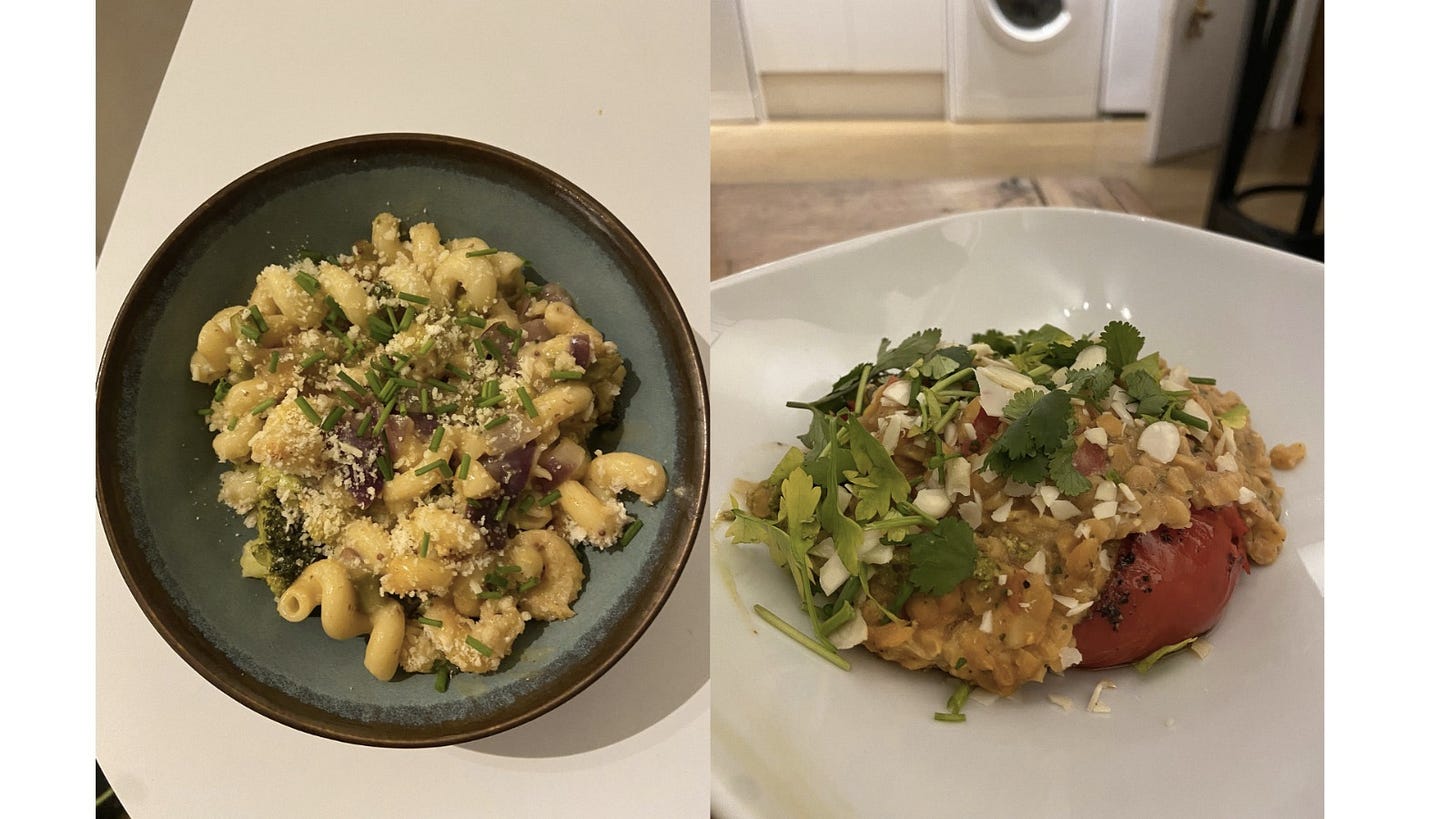🌱 The Grumpy Optimists #45
We're halfway through January and we have a government report and an exhibition to keen you going through the next part...
Happy Monday 👋
We’re over halfway through January, so the worst month of the year is nearly over. The days are getting longer and we’re all feeling a little more optimistic already. We have a great one for you this week - the usual articles, and Mari explains the publication of the UK Government’s understanding of climate risk and what to expect from this. Ella went to a cool exhibition last week at The Design Museum called ‘The Waste Age’ and talks about some of the inspiring design solutions to waste. Will is heading into his final week of Veganuary and has some more tasty tips for anyone else giving it a go.
Have a great week and let us know what you think of this week’s edition 👇
👀 Articles to read
🚴♂️ Active travel gets a boost. Olympic champion, Chris Boardman, will lead Active Travel England as they look to boost funding for cycling and walking. The key goal? Remove our reliance on cars for short journeys. Chris talks about boosting cycling in Manchester on this bloody brilliant podcast.
🅿️ Tax on parking to cut air pollution. Leicester City Council hopes that a new charge on workplace parking will help improve air quality with funding going towards public transport and walking and cycling schemes in the hope of creating a 15-minute city. The proposals are not without critics highlighting the challenges of implementing climate related policy.
🔋 New UK battery plant gets millions in funding. Britishvolt is planning to build a ‘gigafactory’ for electric vehicles, creating 3,000 jobs and unlocking billions in funding.
📈 The Government publishes its latest understanding of climate change risk. The Climate Change Risk Assessment (CCRA), required every 5 years under the Climate Change Act, sets out our latest understanding of the impacts climate change is having, and will have, to all sectors in the UK. It’s informed by the Climate Change Committee’s Independent Assessment of UK climate risk (a much heftier set of reports, terrifying and fascinating to read in equal measure). From droughts to flooding, pests and diseases to heatwaves, climate change is fundamentally affecting our businesses, health and wellbeing, nature, infrastructure and food production.
💭 Why it matters: Mari here! 👋🏼 A shout-out to my colleagues who led on this, I’m super proud of them! It can be easy to assume that because the UK is legislated to reach net zero emissions by 2050, we’ll be ok. In fact, we have a degree of climate change “locked in” (i.e. will inevitably happen) until at least 2040. How bad things get afterwards depends on how quickly the world decarbonises now. The point is we’re already seeing the effects of climate change now and we need to adapt fast. The good news is that the better we understand climate change, the more we can do to evolve and improve our systems to be more resilient. The CCRA will therefore be crucial in informing the third National Adaptation Programme (NAP 🛏️) which is due to be published next year.

🖼️ An exhibition to check out / Ella
Last week I went to The Design Museum in London to check out the Waste Age exhibition and I highly recommend it!
We have reached ‘peak waste’ - as a global population we are creating more waste than ever before. Plastic is the main source of waste and is mostly used for packaging. Of the 359 million tonnes of plastic produced globally each year, 40% is used just once. It’s scary how much plastic has infiltrated our lives - I mean ‘plastiglomerates’ (image below) have now been found, a kind of hybrid plastic rock that is now washing up on beaches globally. The exhibition explores the history of waste, especially plastic. How did we get to where we are today? And where do we go from here?

I won’t lie, the first half of the exhibition was depressing. The images below show a couple of things in the exhibition - the wall of bottle caps was collected from the beaches of Cornwall over a single winter, and this is just one type of plastic in one area of one country. The scale of it is a bit overwhelming. Our love of plastic makes sense - it is cheap to produce in large quantities and is also lightweight, malleable, waterproof, and durable. It can be shaped into a multitude of items.
Plastic was invented in the 1920s, and it has quickly infiltrated every aspect of our lives. It is everywhere and it’s a problem. We were making good progress but sadly the COVID-19 pandemic has made plastic pollution worse. Several countries banned single-use plastic bags and straws, but now our beaches are covered in masks and plastic gloves. We have a way to go.

But we like to keep things optimistic around here and luckily the second half of this exhibition was all about the solutions to the waste age. From fashion to packaging to architecture, designers all over the world are getting creative with solutions. Some of my favourites were about making waste valuable, both for individuals and on a larger scale.
There’s Kamikatsu, Japan’s zero-waste village. In 2003, the village made a zero-waste declaration and has since achieved an 80% recycling rate versus the national rate of 20%. Waste is separated into more than 45 categories, excluding unhygienic items like nappies, and inhabitants are encouraged to recycle by a points-based credit system, giving value to waste.

There was a section of the exhibition that talked about the value of repairing items and resisting the urge to just throw something away and get a new one. France is the first country in Europe to implement a Repairability Index, where electronic goods have to label how easily they can be repaired. This encourages manufacturers to improve the repairability of items including smartphones and laptops. iFixit is also a great idea - a website with free manuals and kits you can buy to repair anything from your phone to your hoover.
Finally, we moved to innovative materials and ways of manufacturing clothes and more so that pieces can be easily taken apart and repaired, reused, or recycled. And there are so many cool things happening! I haven’t been that inspired in a while. Check out the below materials (which are also really cool-looking) and could change so many things we use.
First up, we have calcerous arabesque - a sustainable sugar waste that can be used as a building material, both inside and outside. If used outside, the exterior of the wall has ridges and crevices which would welcome plants and wildlife. Yay!
Secondly, a high-end veneer for interiors and furniture which is made from the husks of endangered heirloom corn from Mexico. This supports the cultivation of these endangered corn species and employs indigenous communities from Tonahuixtla. And just look at those colours 😍.
The Waste Age: What Can Design Do? Is on at The Design Museum until the 20th of February and if you’re in London, I can’t recommend it enough. Be prepared for some depressing facts at the beginning, but it’s interesting to see the history and impact of waste, and I was left feeling inspired and in awe of all the incredible solutions that are out there! I can’t wait to see how all of these new materials and designs take off. Let’s #endthewasteage ♻️
🍆 Veganuary - Week 3 / Will
Well, it’s crunch time. I’m into Week 3 of the challenge and there’s no doubt this has been the toughest yet. We’ve had ‘Blue Monday,’ some very chilly mornings to contend with and plenty of days where you feel starved of sunlight, starting and finishing work in the dark. But we’re half way through January, the days are getting longer, and what’s one of the best things to keep us going? FOOD. And let me tell you, Veganuary has delivered some crackers this week...
😋 Best meal: Mac ’n’ greens. A twist on the classic (left, below), this one caught me by surprise (in a really good way). I’ve searched long and hard for a good vegan Mac ‘n’ cheese recipe and this one fits the bill. Not a bank-breaker, either. Add some chives and vegan parmesan on top and you’re in for a treat. This was closely rivalled by stuffed peppers (right, below). We improvised a little and stuffed ours with lentils, tomato and pesto - topped with flaked almonds and coriander.
👎 Biggest letdown: Vegan toasties. I’ve discovered plenty of great options for eating a healthy, tasty lunch, but this week I found myself running between meetings and I needed something quick. I went for a toastie, but it just wasn’t quite the same with the vegan cheese. If you’re looking for something quick, soup might be a better bet.
✅ Biggest revelation: A good sauce is key to making tasty pasta dishes. Even as a veggie, one of the biggest bear-traps I try to avoid is just chopping up whatever vegetables I have in the fridge and throwing them together with a chosen carb. It’s easy, but it can be bland. This week we’ve made a couple of great pasta dishes - but the key to their success hasn’t been the vegetables or the cheese, it’s been the sauce. Next time you make a spag bol, try throwing some marmite in to thicken up the sauce or grind some fresh basil and pine nuts in. A great sauce can take the dish up a level and make it a real winter warmer.
Top Tip: Meal plans help a lot. I think when people (me included) hear the words meal plan they sometimes run a mile. It sounds organised, too rigid and a little boring. One of the difficulties with eating vegan is that it’s harder to just throw something quick together that is both tasty and nutritious. The end result tends to be something rather underwhelming and lacking in oomph (which doesn’t get you anywhere when you’re already tired). The meal plan helps you make sure you’ve got the right ingredients in the cupboard so when you really aren’t feeling it, you’ve got yourself covered.
The Grumpy Optimists 💚





